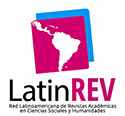Revolution in the Desert: A Reassessment of the Late Bronze/Early Iron Ages in Northwestern Arabia and the Southern Levant
Keywords:
Late Bronze Age, Iron Age, Arabia, Levant, Revolution
Abstract
The societal changes that occurred in north-western Arabia and the arid southern Levant between the mid-second and the beginning of the first millennia BCE were so profound that they can be characterized, borrowing Steven Rosen’s terminology, as a “desert revolution.” This article will review the archaeological and epigraphic evidence of the Late Bronze and Early Iron Ages in the Hejaz, Negev, north-eastern Sinai and southern Jordan. This period of ca. 500 years saw major social, economic and political transformations in the local societies: the development of non-state hierarchical societies; the growth of oasis urbanism in north-western Arabia and industrial-based sites in Edom; the appearance of an advanced metallurgy technology in the Arabah Valley; the construction of the earliest hydraulic works in northern Arabia; the earliest evidence of Bedouin agriculture in the Negev; the domestication of the dromedary and its use as beast of burden; the emergence of long-distance trade networks; the appearance and expansion of autochthonous industrial ceramic traditions; and the materialization of a new religious world with local, tribal deities. The northern Arabian and southern Levantine tribal confederacies and states of the first millennium BCE can no longer be considered emerging from a vacuum, but rather they were the result of long-term transformations that had started centuries earlier.Downloads
Download data is not yet available.
Published
2020-09-20
How to Cite
Tebes, J. M. (2020). Revolution in the Desert: A Reassessment of the Late Bronze/Early Iron Ages in Northwestern Arabia and the Southern Levant. Revista Del Instituto De Historia Antigua Oriental ’Dr. Abraham Rosenvasser’, (21), 99-125. https://doi.org/10.34096/rihao.n21.8653
Issue
Section
Artículos





.jpg)







